The ultimate dining experience for hummingbirds is a well-stocked garden. Obviously, they will flock to your feeders if that is their only option. And in the earliest days of spring or the dog days of summer, your feeders may be necessary for their survival. But nothing pleases hummingbirds more than offering them a nectar-filled all you can eat buffet. Want to know what to set out? Read on for a detailed list of plants that are hummingbird magnets.
Color is Key
The ideal hummingbird bistro includes an assortment of blossoms in an array of colors, especially red. Hummingbirds can see red from far away, while most other critters, including birds and bees, can’t distinguish red at all. Therefore, hummers somehow know that if they see a red blossom, it probably hasn’t already been picked over, and they head right for it. They actually will check out any red object.
But, of course, once you put out the ‘eat here’ sign, you have to have the smorgasbord ready. Plant a variety of different blossoms, especially tube-shaped blossoms that hang and cascade. The hummer is just about the only creature that can extract pollen from a tubular blossom. So it’s like putting out an exclusive dish for them at the buffet.
Bonus Butterflies
There is a lot of overlap between the favorite plants of butterflies and hummers. So by planting with hummingbirds in mind, your yard will also become a gathering place for butterflies. The hummers will dart from flower to flower while the butterflies flutter about leisurely.
Stocking Your Hummingbird Buffet
There are hundreds of plant species that hummingbirds love. But you will want to narrow down your selection to those that will do well in your zone.
You’ll also want to aim for a garden that will have something blooming in it from the beginning of spring until the first hard frost. By considering the bloom times of different plants, you can come up with a mix that will achieve this goal. To make it easy for you, we have grouped the list below according to bloom times.
Hummingbirds rely on sight more than smell. So the showier the blossoms, the more interested they will be. As mentioned earlier, they like red, and some gardeners also recommend orange. In the list below we have linked to red varieties, but you don’t need a solid red garden to have lots of hummingbirds. Just be sure to provide a decent showing of red and orange, and then go for whatever color mix suits your fancy.
Variety is always a good idea. Mix it up by offering the hummers a combination of bushes, shrubs, perennials, and annuals. One note of caution: please don’t use chemical pesticides or fertilizers in your hummingbird garden. Hummers are tiny, sensitive creatures. Their systems can hardly handle the red dye some people put in the sugar water of their feeders, let alone strong chemicals. We know you want them to be around for a long, long time, so please be sure that the blossoms they feed on are not laced with anything toxic.
Your Hummingbird Garden Will Attract Year After Year
Hummingbirds will return year after year to a spot they like, and they will tell their friends, too. So when you create a hummingbird garden, the time you invest will reap many delights for years to come. Both for you and for the hummers.
Want continuous blooms throughout the entire growing season? Plant a variety of bushes, shrubs, perennials and annuals. The bushes and perennials will be the foundation of your hummingbird garden. You can change the annuals to create a different look each summer. To help you make your choices, here is a month-by-month guide to what will bloom when and for how long:
March to April
Chaenomeles (Flowering Quince): deciduous shrub, bonsai trainable, drought-tolerant, deer resistant and ideal for cut arrangements. Ours produce neither thorns nor fruits. Chaenomeles will bloom from early spring to early or mid-summer.
Canna: tropical, trumpet-shaped blossoms, lily-like foliage, needs 6-8 hours of sun and a warmer winter location, but is suitable for containers. Blooms 90 days after seeding from mid-summer to first frost.
Cleome (Spider Flower): Plants grow sturdy 4-foot stems topped with unique flower blossoms. Blooms throughout spring and fall until the first frost.
Lantana: free flowering, tender perennial, suitable for indoor and outdoor containers, sun-lover, drought- and salt-tolerant. Lantana will bloom from late spring through October or November.
Weigela: highly adaptable, trumpet-shaped blossoms, fragrant with low pollen (ideal for allergy sufferers), and deer resistant. Weigela will bloom from early spring to early fall.
April to May
Aquilegia (Columbine): blooms late spring, early summer, drought-tolerant in partial shade, deer resistant.
Digitalis (Foxglove): perennial or biennial, wide variety of colors, prefers moist soil, puts on a dramatic and flamboyant display. Blooms late spring to late summer.
Fuchsia: annual, hanging blossoms ideal for hummingbirds, prefers partial shade, well-suited for containers, striking and tropical-looking flowers, blooms mid-spring to mid-fall.
Impatiens: annual, partial sun to full shade preferred, perfect for container growing, wide variety of colors and forms, blooms late spring to early fall.
Lonicera (Honeysuckle): deciduous vine, wonderfully aromatic, blooms from spring through fall and its fall berries attract migratory songbirds. Lonicera will bloom from mid-spring though October or November.
Lupinus (Lupine): extremely adaptable, stunning planted en masse, popular for cutting gardens, fragrant and colorful, blooms late spring to summer.
Petunia: extremely versatile annual, light and sweet fragrance, low maintenance, fantastic variety of colors and forms, good for containers and beds. Blooms throughout spring until the first hard frost.
Salvia (Meadow Sage): disease- and pest-free perennial, blooms spring to fall, drought-tolerant, grows in poor soils and looks beautifully dramatic in cut arrangements.
May to June
Buddleia (Butterfly Bush): low maintenance, drought-tolerant once established, fragrant and great for cut arrangements. Buddleia will bloom from mid-summer to early fall.
Monarda (Bee Balm): is a fragrant perennial in the mint family and ideal for shaded, naturalized areas. It attracts beneficial predatory insects and pollinators. Blooms from early summer to early fall.
June to July
Agastache (Hummingbird Mint or Hyssop): perennial in many climates; heat, drought, wind and rain tolerant, deer repellant, aromatic and nice in cut flower arrangements. Will bloom from early summer to mid-fall.
Penstemon (Beardtongue): drought-tolerant, tubular blossoms, perennial tolerant to below 0°, deer and rabbit resistant. Blooms from mid-summer to late summer.
Phlox: available in creeping and garden varieties, easy to grow and care for, semi-evergreen foliage and a nice addition to fresh cut arrangements, blooms mid-summer to fall.
Here’s to a gorgeous hummingbird garden teeming with these marvelously entertaining and amazingly energetic little gems.
Happy growing!

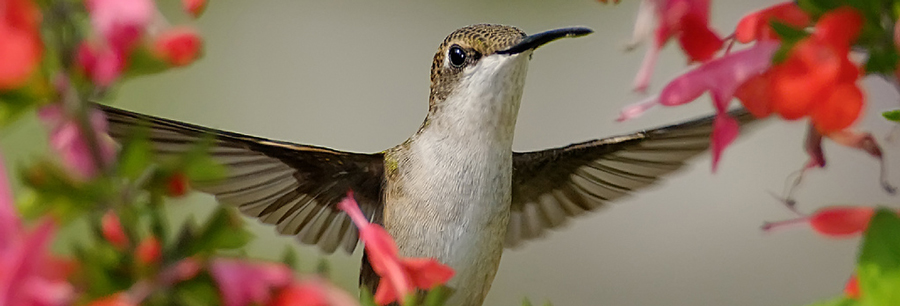

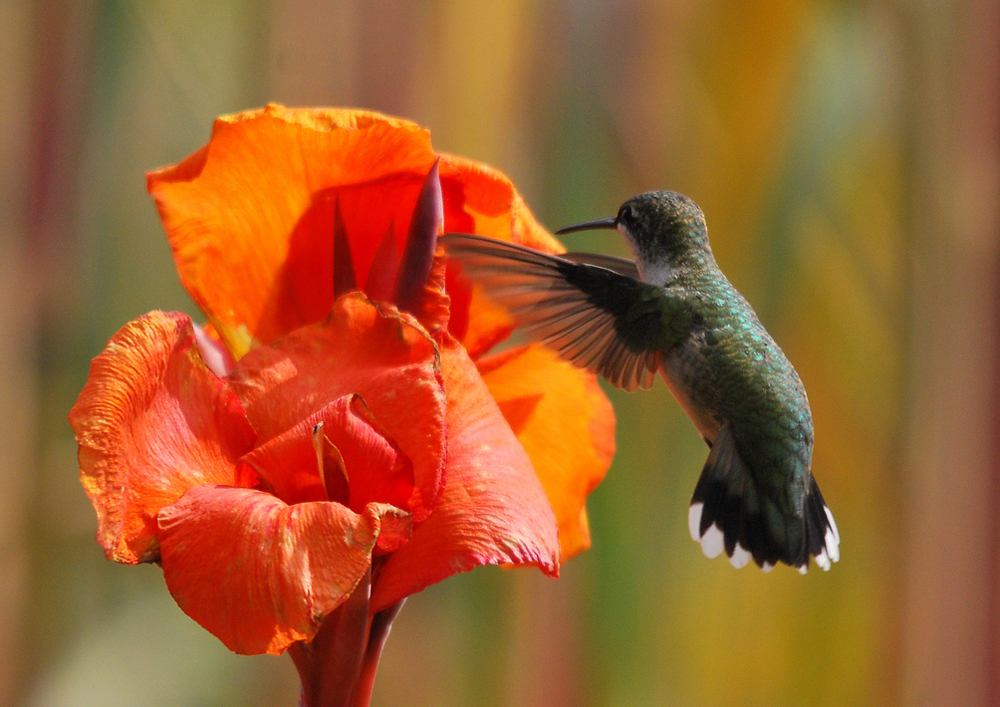

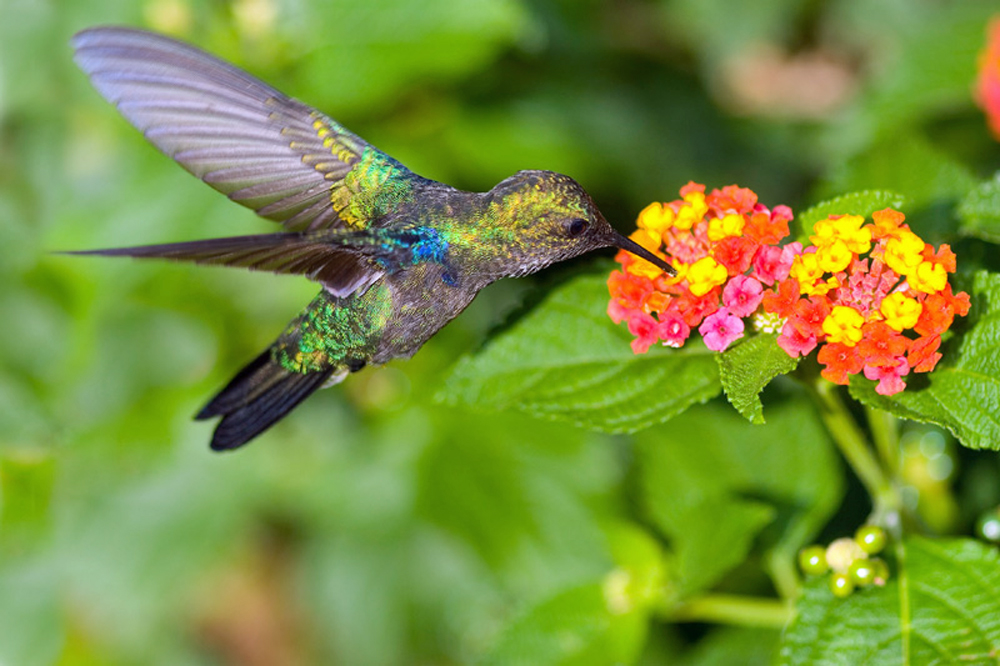




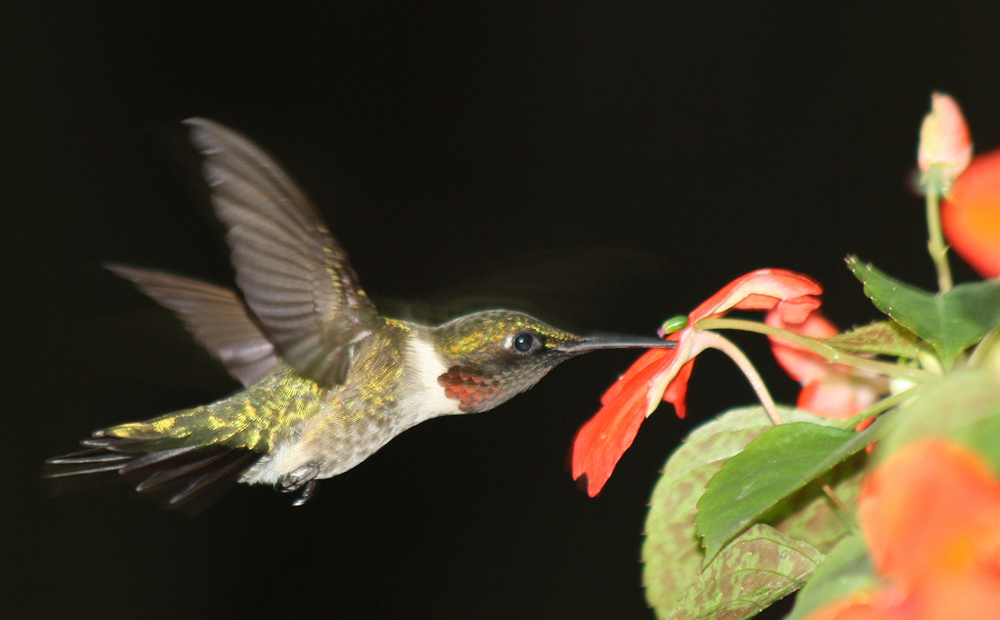
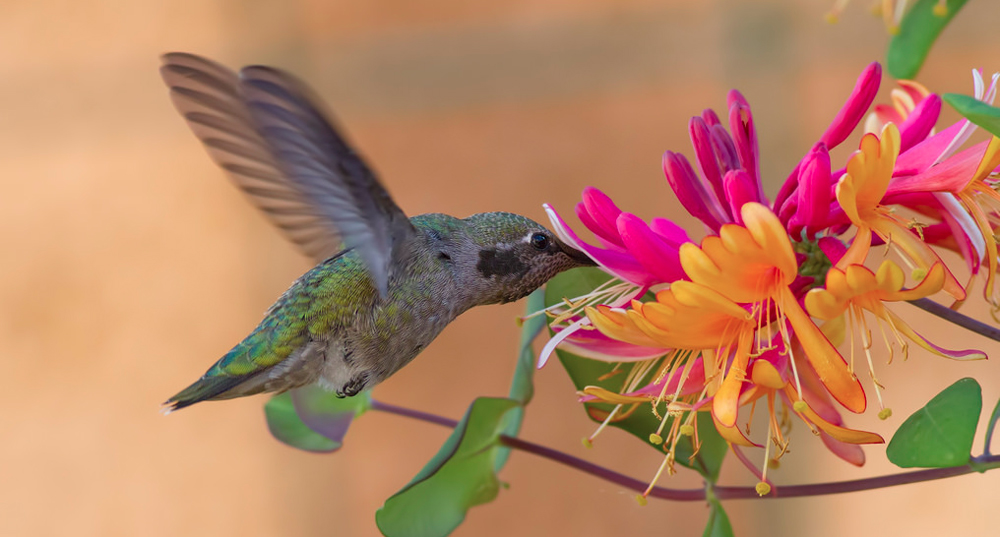
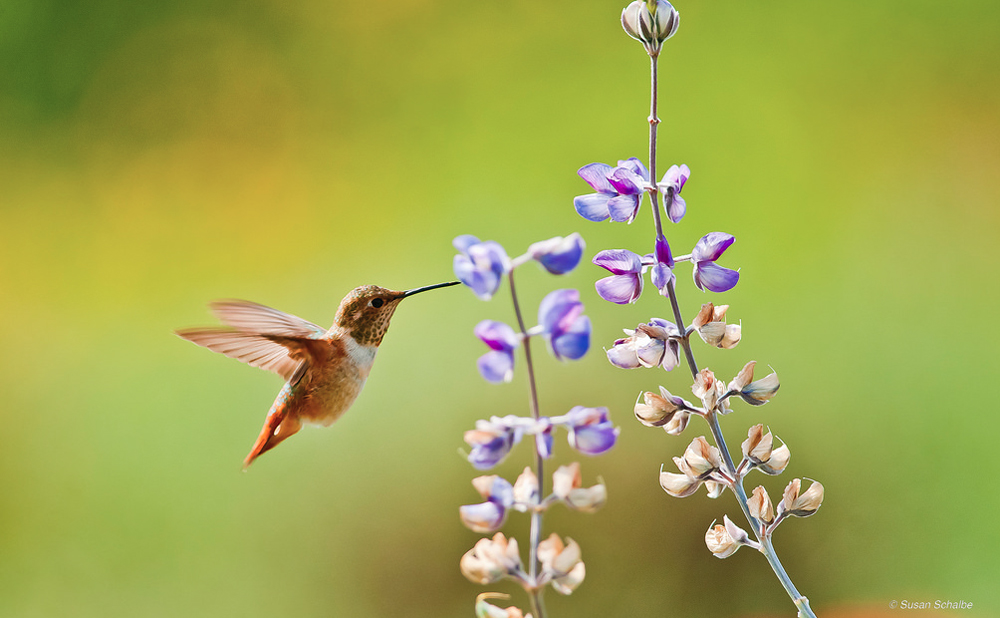
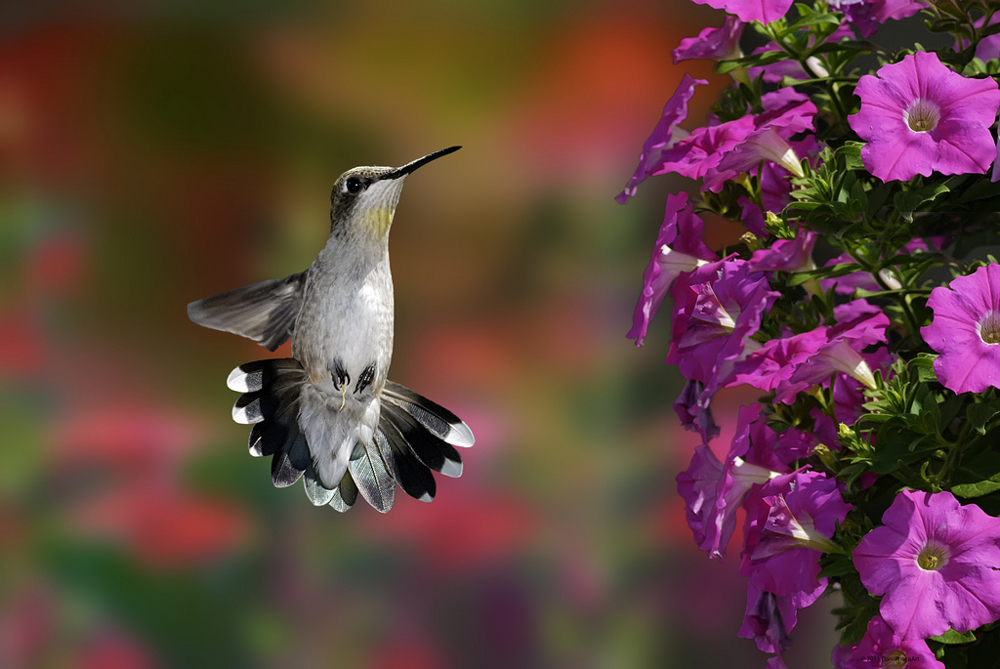

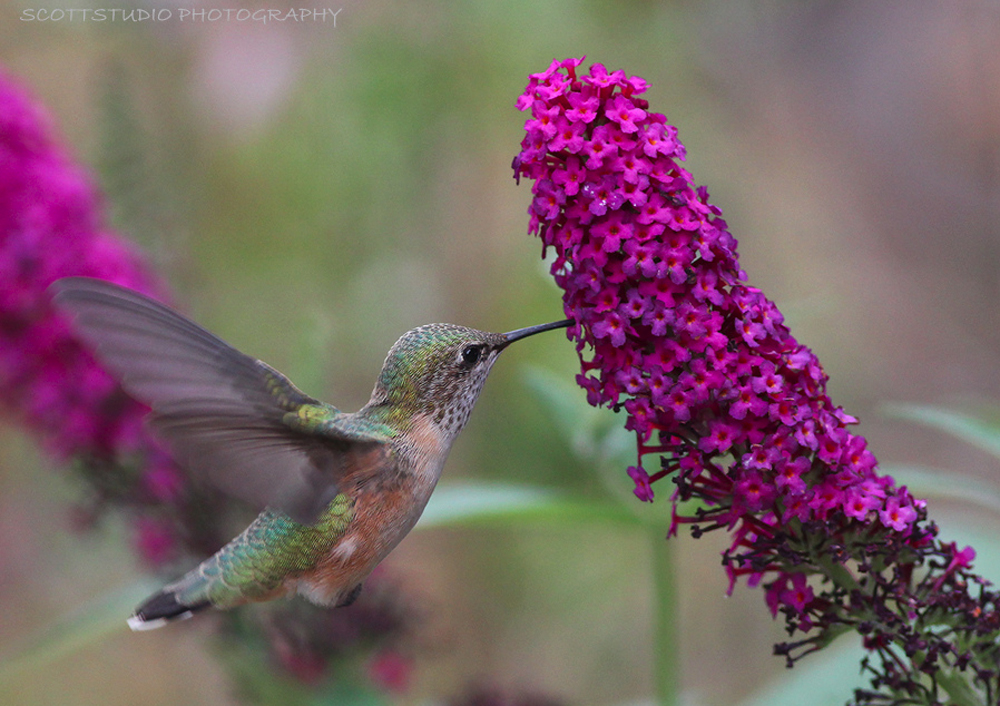

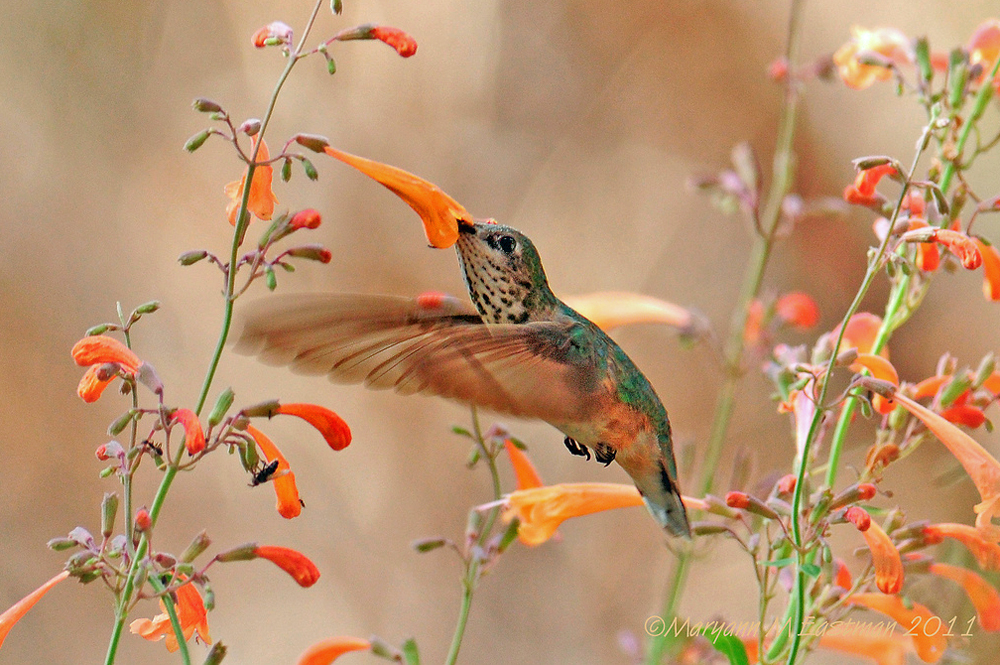
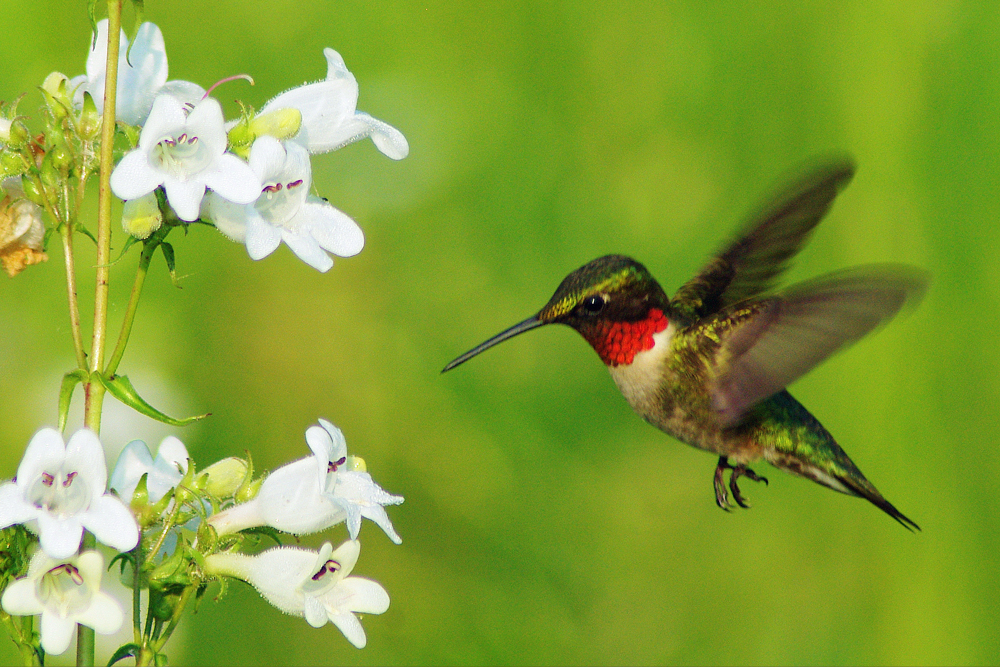
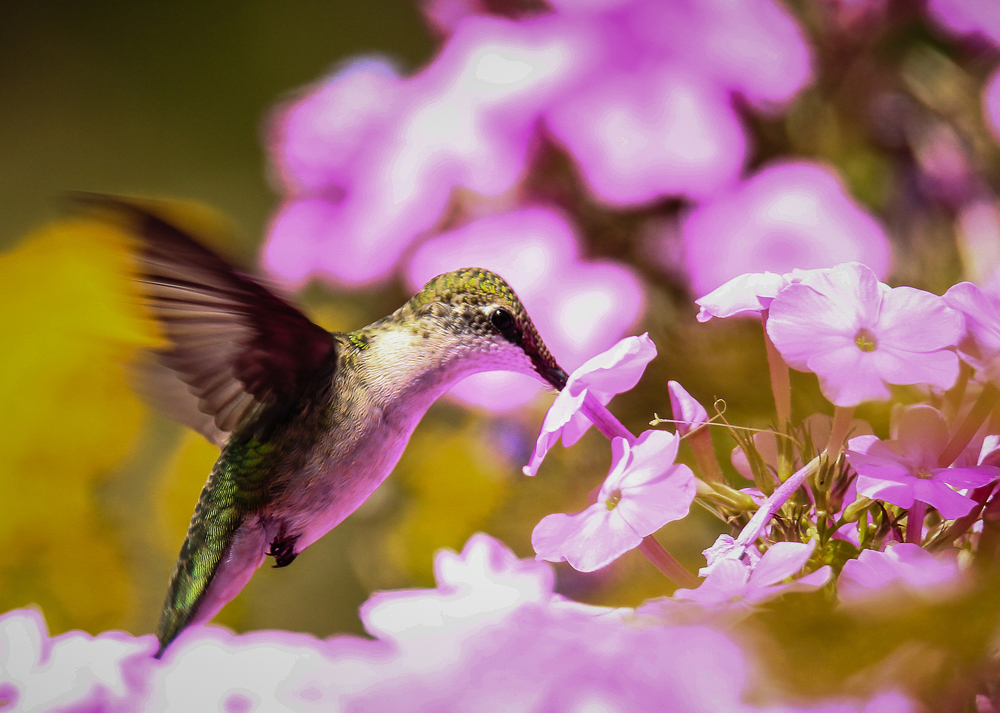
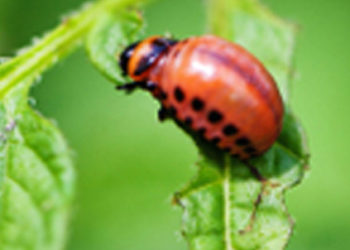
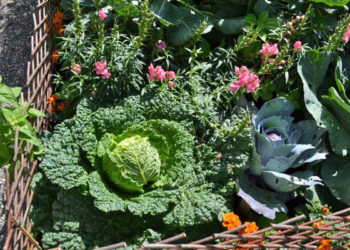
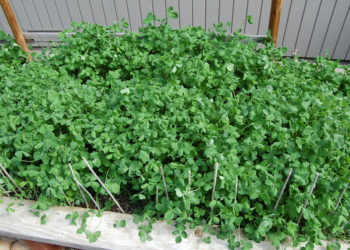
17 Comments
Diane
May 24, 2013 at 6:19 pmI wish it was easier to find Spigelia Marilandica (Indian Pink), native and a hummer plant I have 1 plant that I planted several years ago. It has done wonderfully. Tracked down a local native plant nursery that carried them and bought 2- only one is coming up and I hope it makes it.
Why is this wonderful little perennial so difficult to find?
jstutzman
May 25, 2013 at 10:09 amDiane, the availability of plants has a lot to do with the demand overall. Apparently this variety is not in high demand.
LaurieAnn Lepoff
May 25, 2013 at 12:04 amI always feel like I’m in the presence of a miracle when I see a hummingbird. My garden has lots of humming bird plants and I do see them at times, but not with the regularity of a popular feeder. I never had a crowd when I did have a feeder, but maybe it’s time to try again!
Cathy
February 8, 2014 at 6:55 pmLaurie Ann, yes, do keep trying. People who get lots of hummingbird traffic have been feeding them for years. At one place I had lived, in an upstairs apt., every year, I kept getting more and had 3 feeders to try to keep them from getting territorial. When I moved, I talked with neighbors and found out that they were also feeding them! The success lies in making proper nectar and keeping the feeder clean and change it more often when it’s hot. I boil water and add between 1/4-1/3 sugar. Refrigerate excess for a week or less. Another trick is tie red ribbons/rags/anything to attract them because they can see it when they are flying.
Nick
May 6, 2014 at 2:20 amYou should also leave building materials for them. I hang cotton balls from my trees as well as short pieced of thread. I currently have a nesting hummingbird in a tree on my lot and there are many colored thread and cotton in it’s nest construction.
jstutzman
May 6, 2014 at 8:48 amNick, that is an excellent suggestion. Thanks for sharing it with us!
Jane Siewert
May 15, 2014 at 8:51 pmThink they forgot to mention “trumpet vines” – we have a large arbor with huge vines and they adore the trumpets!!
Kath
May 15, 2014 at 10:20 pmOur 20′ mature Mimosa tree attracts so many hummingbirds during the summer blooming it is almost amazing – we also plant many perennials and annuals to feed these tiny gems – love them !
jstutzman
May 16, 2014 at 8:34 amSounds wonderful Kath. We would love to see some photos! Joe
Karen
May 16, 2014 at 10:59 amThey left out turk’s cap. It’s red and for someone who doesn’t have much luck with plants, it’s a Godsend. I also have a mimosa tree and a pine tree that the hummers love. But the most important thing is keep those feeders cleaned. To that end, they have several kinds of feeders and the easiest to clean is the one that looks like a flying saucer, very easy to clean, they have one with an ant guard on it(a water well) a little expensive when bought at Birds Unlimited. But now Wal*Mart has finally got one in that is similar and about half the price. Don’t get those tall ones they are hard to clean and waste a lot of sugar water and can have a sort of vapor block. Remember if you are changing it and cleaning it 2-3 times a week, you want to make it easy on yourself.
Christine R.
May 16, 2014 at 2:50 pmI have some great pics I would love to share with everyone.
Where do I post them?
jstutzman
May 16, 2014 at 3:01 pmChristine, send them to info@gardenharvestsupply.com with “for blog” in the subject. Thanks, Joe
Brenda
April 28, 2015 at 1:43 pmI have Turks Cap plant that is perennial. Hummingbirds love it! I live in zone 6 or 7.
Donna
May 15, 2015 at 8:54 amI saw my first hummingbird in my yard this week. He came back the next day. I didn’t see him yesterday. He really liked the Russian Sage I have planted. I’ve waited 16 years to see one in my backyard!
Nicol
May 16, 2015 at 12:03 pmI have a mostly shady yard.. and my hummers are after the rhododendrons..the red ones of course..
Annie
April 5, 2016 at 12:23 pmWe saw our first hummingbirds of the season 4/4/16! We have red and purple petunias, Easter lilies, azaleas, cross vine, woodbine, yellow jasmine, verbena, forsythia, amaryllis,and flowering quince in bloom, and 5 small feeders out. At the height of the season last summer we were feeding over three dozen hummers. We have many varieties of salvia, Mexican hyssop, monarda, butterfly bush, pentas, impatiens, fuchsia, columbine,and agastache that will provide food for them til frost.
jstutzman
April 28, 2016 at 2:16 pmAnnie, that sounds like a wonderful hummer garden! We would love to see some photos should you care to share them with us. Thanks for the list of plants you use. GHS